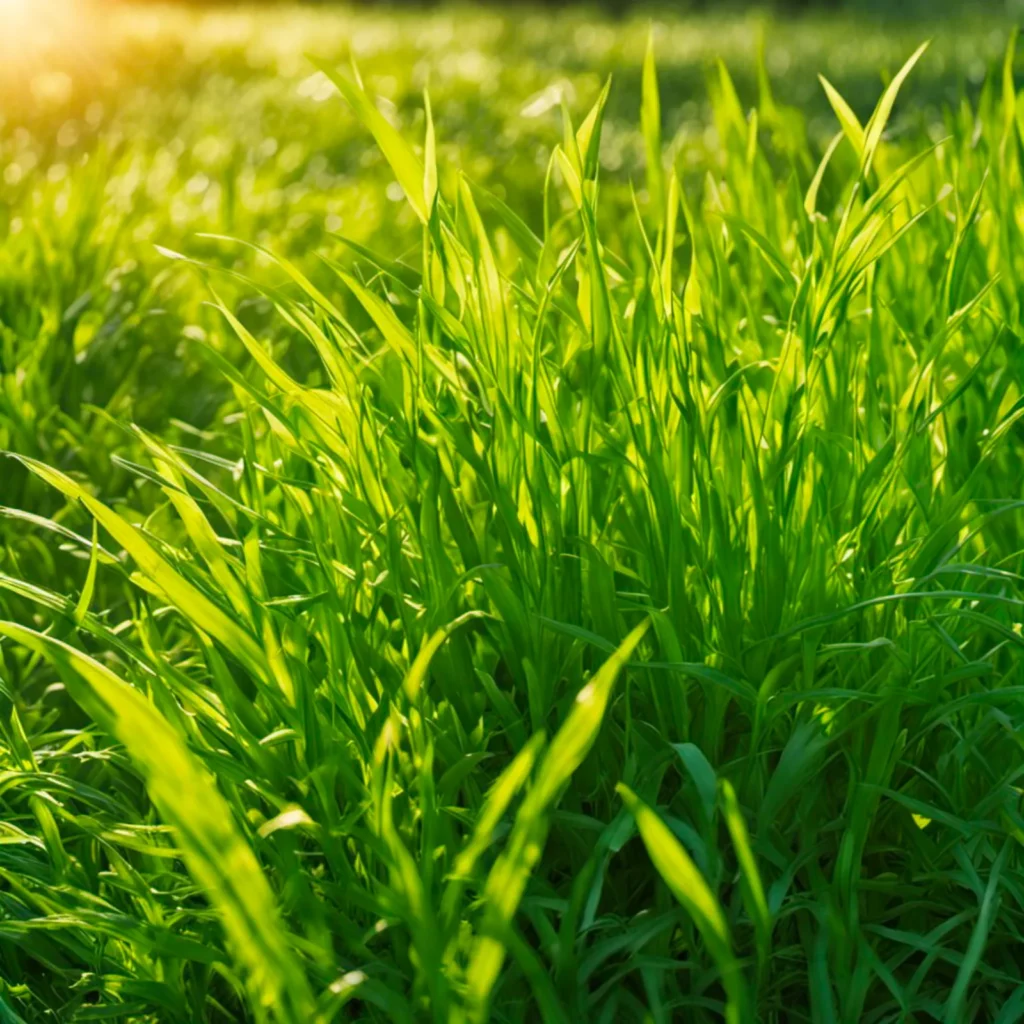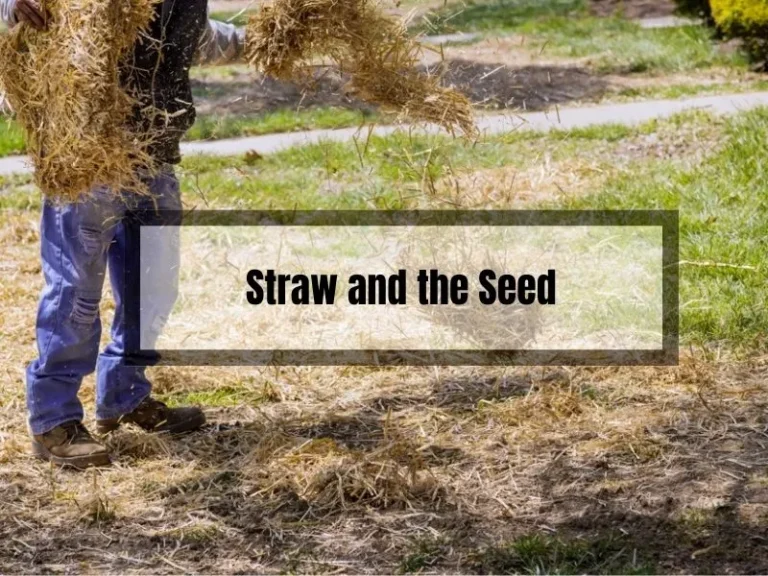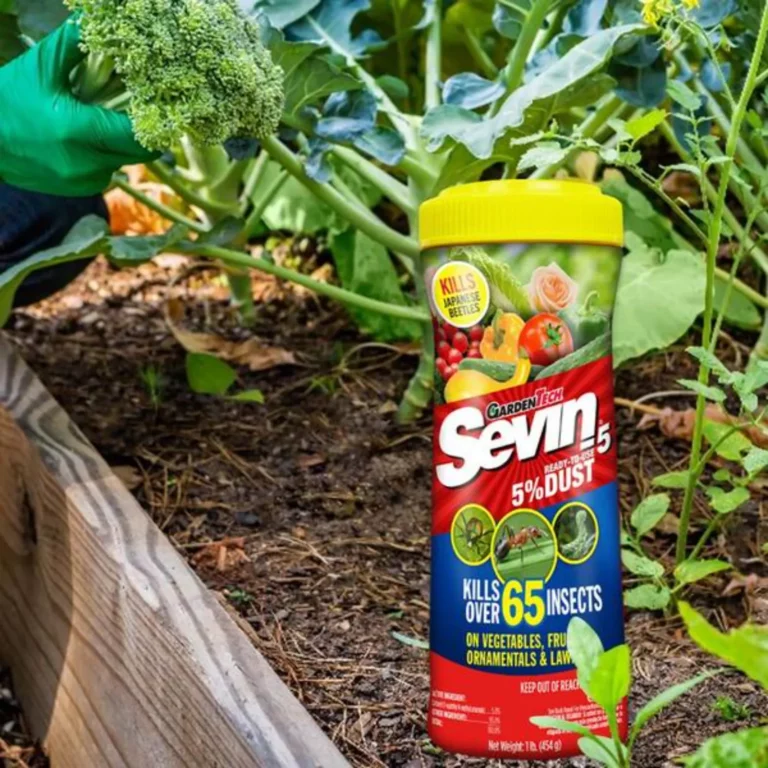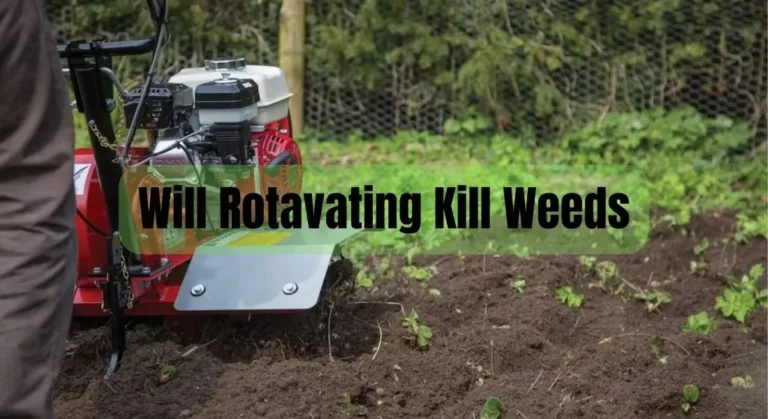Say Goodbye to Southern Lawn Crabgrass: 4 Proven Solutions
Tired of crabgrass taking over your beautiful southern lawn? We’ll show you how to get rid of it and prevent its return. Killing crabgrass in southern lawns can be tricky, but it’s possible.
Learn the best time and tools needed for the job. Prevention is key, but if you already have crabgrass, we’ll guide you through removal.
This article covers everything, from timing to tools, for a comprehensive guide to a crabgrass-free lawn. Let’s get started!
Key Takeaways
- Understanding the best time to kill crabgrass and prevention methods are crucial for a healthy lawn.
- The right tools are necessary to get rid of crabgrass in southern lawns.
- Following a step-by-step guide and taking safety measures can help you effectively kill crabgrass.

How to Kill Crabgrass in Southern Lawns
If you live in the southern region of the United States, you know how difficult it can be to keep your lawn looking healthy and green.
One of the biggest challenges you may face is dealing with crabgrass. Crabgrass is an invasive weed that can quickly take over your lawn if left unchecked. Fortunately, there are several ways to kill crabgrass in southern lawns.
1. Pre-Emergent Herbicides
Pre-emergent herbicides are a type of weed killer that you apply to your lawn before the crabgrass has a chance to germinate. These herbicides work by creating a barrier in the soil that prevents the crabgrass seeds from sprouting. Some popular pre-emergent herbicides include Pendimethalin, Prodiamine, and Dithiopyr.
When using pre-emergent herbicides, it’s important to apply them at the right time. In the southern region, you should apply pre-emergent herbicides in early spring before the soil temperature reaches 55 degrees Fahrenheit.
Be sure to follow the instructions on the label carefully, as applying too much or too little can reduce the effectiveness of the herbicide.
2. Post-Emergent Herbicides
If you already have crabgrass in your lawn, you’ll need to use a post-emergent herbicide to kill it. Post-emergent herbicides work by targeting the crabgrass specifically, leaving your grass unharmed. Some popular post-emergent herbicides include Quinclorac, Fenoxaprop, and Mesotrione.
When using post-emergent herbicides, it’s important to apply them when the crabgrass is actively growing. In the southern region, this is typically in the late spring or early summer.
Be sure to follow the instructions on the label carefully, as applying too much or too little can reduce the effectiveness of the herbicide.
3. Manual Removal
If you only have a few patches of crabgrass in your lawn, you may be able to remove them manually. To do this, simply grab the crabgrass at the base and pull it out of the ground. Be sure to get as much of the root system as possible, as any remaining roots can allow the crabgrass to regrow.
Manual removal can be time-consuming, but it’s a good option if you don’t want to use herbicides in your lawn. Just be sure to dispose of the crabgrass properly, as any seeds left behind can still germinate and spread.
4. Proper Lawn Care
Finally, one of the best ways to prevent crabgrass from taking over your lawn is to practice proper lawn care. This includes regular mowing, watering, and fertilizing. When you keep your lawn healthy and thick, it’s more difficult for crabgrass to take hold.
Additionally, you can overseed your lawn with a warm-season grass like Bermuda or Zoysia. These grasses are more resistant to crabgrass and can help keep it under control.
Prevention of Crabgrass

Nobody likes crabgrass. It’s an invasive weed that can take over your lawn if you’re not careful. Luckily, there are steps you can take to prevent it from appearing in the first place. Here are some tips to help you keep your lawn crabgrass-free.
Keep Your Lawn Thick and Healthy
One of the best ways to prevent crabgrass is to keep your lawn thick and healthy. A thick lawn will choke out any weeds that try to grow in it, including crabgrass.
keep your lawn thick, make sure to fertilize it regularly and water it deeply and infrequently. You should also mow your lawn regularly and at the right height. For most southern lawns, the ideal mowing height is between 2.5 and 3 inches.
Use a Pre-Emergent Herbicide
Another effective way to prevent crabgrass is to use a pre-emergent herbicide. This type of herbicide is applied before the crabgrass seeds germinate, and it prevents them from growing. Some of the best pre-emergent herbicides for southern lawns include:
- Prodiamine
- Dithiopyr
- Pendimethalin
Make sure to apply the herbicide at the right time. In most southern states, the best time to apply a pre-emergent herbicide is in early spring, before the soil temperature reaches 55 degrees Fahrenheit.
Fix Bare Spots
Bare spots in your lawn are an invitation for weeds to grow, including crabgrass. To prevent this, make sure to fix any bare spots as soon as possible.
You can do this by overseeding the area with grass seed or by laying down sod. Make sure to keep the area well-watered until the grass is established.
Don’t Overwater Your Lawn
Overwatering your lawn can actually make it more susceptible to crabgrass. When you overwater your lawn, the soil stays moist for longer periods of time, which can encourage crabgrass to grow.
Instead, water your lawn deeply and infrequently. Most southern lawns need about an inch of water per week, either from rainfall or irrigation.
Best Time to Kill Crabgrass
When it comes to killing crabgrass, timing is everything. The best time to kill crabgrass is in the spring before it has a chance to take root and spread. Crabgrass is an annual weed, which means that it dies off at the end of the growing season and reseeds itself in the spring. By targeting crabgrass early in the season, you can prevent it from spreading and taking over your lawn.
The ideal time to apply pre-emergent herbicides is when the soil temperature reaches around 55 to 60 degrees Fahrenheit. This typically occurs when the Forsythia or Redbud trees start blooming in your area. Applying pre-emergent herbicides too early or too late can reduce their effectiveness.
It is important to note that pre-emergent herbicides only work on crabgrass seeds that have not yet germinated. Once the crabgrass has sprouted, it is much more difficult to control. If you miss the window for pre-emergent herbicides, you can still use post-emergent herbicides to kill the crabgrass. However, these herbicides can also harm your lawn, so use them sparingly and carefully.
In addition to herbicides, you can also use organic methods to control crabgrass. Hand pulling is an effective method for small patches of crabgrass. When pulling crabgrass, make sure to remove the entire root system to prevent regrowth. You can also use a hoe or cultivator to remove crabgrass from larger areas.
Tools Needed
When it comes to killing crabgrass in your southern lawn, there are a few tools that you’ll need to have on hand. In this section, we’ll go over the necessary tools for both chemical and non-chemical methods.
Chemical Herbicides
If you’re planning on using chemical herbicides to kill your crabgrass, then you’ll need to have the following tools:
- Sprayer: You’ll need a sprayer to apply the herbicide to your lawn. Make sure that you choose a sprayer that is appropriate for the size of your lawn.
- Post-emergent herbicide: This type of herbicide is designed to kill crabgrass after it has already emerged from the soil. Look for a product that contains either quinclorac or fenoxaprop-p-ethyl, as these are both effective at killing crabgrass.
- Pre-emergent herbicide: This type of herbicide is designed to prevent crabgrass from germinating in the first place. Look for a product that contains either dithiopyr or prodiamine, as these are both effective at preventing crabgrass from growing.
Non-Chemical Methods
If you’re planning on using non-chemical methods to kill your crabgrass, then you’ll need to have the following tools:
- Weeding tool: You’ll need a weeding tool to remove the crabgrass from your lawn. Look for a tool that has a pointed end, as this will make it easier to remove the crabgrass roots.
- Gardening gloves: It’s important to wear gardening gloves when removing crabgrass, as it can be difficult to remove and may have sharp edges.
- Mulch: Mulch can be used to prevent crabgrass from growing in the first place. Apply a layer of mulch around your plants to prevent crabgrass from germinating.
By having the right tools on hand, you’ll be able to effectively kill crabgrass in your southern lawn. Whether you choose to use chemical or non-chemical methods, make sure that you follow the instructions carefully to ensure that you get the best results possible.
Step-by-Step Guide to Killing Crabgrass
Crabgrass is a pesky weed that can take over your lawn if you don’t take care of it. Luckily, there are several steps you can take to kill crabgrass and prevent it from coming back. Follow this step-by-step guide to get rid of crabgrass once and for all.
Step 1: Identify the Crabgrass
Before you can kill crabgrass, you need to make sure you’re dealing with the right weed. Crabgrass is a light green weed with wide blades that grow in a circular pattern. It’s most commonly found in sunny areas of your lawn and can quickly spread if not taken care of.
Step 2: Pull the Crabgrass
One of the easiest ways to get rid of crabgrass is to pull it out by hand. Make sure to wear gloves and use a weeding tool to get the entire root system. This is a good option if you only have a few patches of crabgrass in your lawn.
Step 3: Use a Post-Emergent Herbicide
If you have a lot of crabgrass in your lawn, you may need to use a post-emergent herbicide. These herbicides are designed to kill weeds that have already sprouted. Look for a product that’s specifically designed to kill crabgrass and follow the instructions carefully.
Step 4: Apply a Pre-Emergent Herbicide
To prevent crabgrass from coming back, you’ll need to apply a pre-emergent herbicide. These herbicides are designed to kill crabgrass seeds before they can sprout. Apply the herbicide in the spring before the soil temperature reaches 55 to 60 degrees Fahrenheit.
Step 5: Water Your Lawn
After applying herbicides, make sure to water your lawn thoroughly. This will help the herbicides penetrate the soil and kill the crabgrass. Make sure to follow the instructions on the herbicide label for watering instructions.
Step 6: Reseed Your Lawn
If you’ve pulled a lot of crabgrass or used herbicides, you may need to reseed your lawn. Make sure to choose a grass seed that’s appropriate for your region and follow the instructions carefully.
By following these steps, you can get rid of crabgrass and keep it from coming back. Make sure to take care of your lawn by mowing regularly, fertilizing, and watering appropriately to prevent future weed growth.
Safety Measures
When dealing with herbicides and pesticides, it is important to take certain safety measures. Here are some tips to keep in mind when using products to kill crabgrass in your southern lawn:
- Wear protective clothing: When handling herbicides and pesticides, it is important to wear protective clothing. This includes long-sleeved shirts, long pants, gloves, and eye protection. This will help prevent any chemicals from coming into contact with your skin or eyes.
- Follow instructions carefully: Always read the label on the herbicide or pesticide before use. Follow the instructions carefully and use the product only as directed. Overuse or misuse of these products can be harmful to both you and your lawn.
- Keep children and pets away: When applying herbicides or pesticides, it is important to keep children and pets away from the area. These products can be harmful if ingested or inhaled.
- Dispose of containers properly: After using herbicides or pesticides, make sure to dispose of the containers properly. Do not throw them in the trash or pour them down the drain. Check with your local waste management facility for proper disposal methods.
- Wait before re-entering the area: After applying herbicides or pesticides, it is important to wait before re-entering the area. This will help ensure that the chemicals have had time to dry and are no longer harmful.
By following these safety measures, you can effectively kill crabgrass in your southern lawn without putting yourself or others in danger.
Maintenance After Killing Crabgrass
Congratulations! You have successfully killed the crabgrass in your southern lawn. However, the work doesn’t stop there. It’s important to maintain your lawn to prevent crabgrass from returning and to keep your lawn looking healthy and lush.
Fertilizing Your Lawn
Fertilizing your lawn is an essential part of maintaining a healthy lawn. After killing the crabgrass, your lawn may have patches of dead grass. Fertilizing your lawn will help promote the growth of new grass in those areas.
It’s important to use a fertilizer that is specifically formulated for southern lawns and to follow the instructions carefully. Over-fertilizing can damage your lawn and lead to more weed growth.
Watering Your Lawn
Proper watering is also essential for maintaining a healthy lawn. Water your lawn deeply and infrequently to encourage deep root growth.
It’s best to water your lawn in the early morning to reduce evaporation and to prevent fungal growth. Avoid watering your lawn in the evening as this can lead to fungal growth.
Mowing Your Lawn
Mowing your lawn at the correct height is important for maintaining a healthy lawn. Set your mower blade to the recommended height for your type of grass. Mowing too short can stress your lawn and lead to weed growth.
Leave the grass clippings on your lawn as they will decompose and provide nutrients to your lawn.
Pre-Emergent Herbicides
Using pre-emergent herbicides can help prevent crabgrass from returning. Apply the herbicide in the spring before the crabgrass seeds germinate.
Follow the instructions carefully and apply the herbicide evenly to your lawn. Be sure to water your lawn after applying the herbicide to activate it.
Hand-Pulling Weeds
Hand-pulling weeds is an effective way to remove weeds from your lawn. However, it can be time-consuming and labor-intensive. It’s important to remove the entire weed, including the roots, to prevent it from growing back. Wear gloves to protect your hands and use a weeding tool to make the job easier.
Maintaining a healthy lawn requires time and effort, but it’s worth it to have a beautiful lawn. By fertilizing, watering, mowing, using pre-emergent herbicides, and hand-pulling weeds, you can prevent crabgrass from returning and keep your lawn looking its best.
FAQ
Got questions about killing crabgrass in your southern lawn? We’ve got answers!
How do I know if I have crabgrass in my lawn?
Crabgrass is an annual weed that typically germinates in the spring and dies off in the fall. It has wide, flat blades that grow in a circular pattern, and it can quickly take over your lawn if left unchecked.
To determine if you have crabgrass, look for patches of grass that are thicker and coarser than the rest of your lawn, or for areas where the grass is growing in a circular pattern.
When is the best time to apply crabgrass killer?
The best time to apply crabgrass killer is in the spring, before the weed has a chance to germinate.
Most crabgrass killers are pre-emergent herbicides, which means they work by preventing the weed from sprouting in the first place. If you wait until the crabgrass has already started to grow, it can be much more difficult to get rid of.
Can I use natural remedies to kill crabgrass?
A: While there are some natural remedies that can help control crabgrass, they are generally not as effective as chemical herbicides.
Some options include pulling the weeds by hand, smothering them with mulch, or using a vinegar spray. However, these methods may not completely eradicate the weed and may require repeated applications.
Will crabgrass killer harm my lawn?
Most crabgrass killers are designed to target the weed without harming your lawn. However, it’s important to read the label carefully and follow the instructions to avoid damaging your grass.
Some types of crabgrass killer may not be suitable for certain types of grass, so be sure to choose a product that is appropriate for your lawn.
How can I prevent crabgrass from coming back?
The best way to prevent crabgrass from coming back is to maintain a healthy lawn. This means watering and fertilizing your grass regularly, mowing it to the proper height, and aerating the soil as needed.
You can also use a pre-emergent herbicide in the spring to prevent the weed from sprouting. Additionally, be sure to remove any dead grass or thatch from your lawn, as this can provide a breeding ground for crabgrass seeds.





